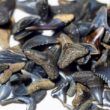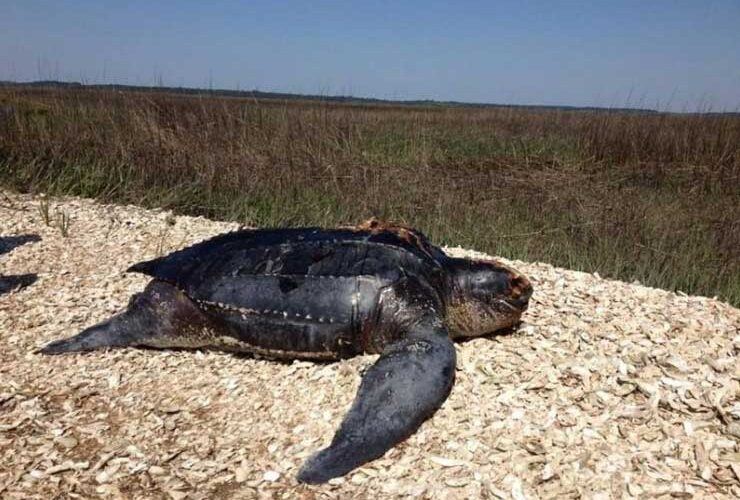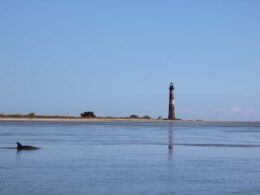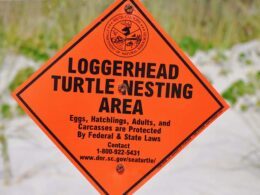It’s always a treat here in the Lowcountry when you become part of the privileged few who get to see a leatherback turtle along our shores. Such was the case for Charter Capt. Harry Demosthenes recently when he piloted a crew full of customers on the Drum Runner to catch sea trout.
Only, this time, the sighting had an unfortunate twist — the huge sea turtle he spotted along the banks of the North Edisto River was no longer alive. Upon further inspection, a tag on the gentle giant’s flipper revealed she had sojourned to South Carolina waters all the way from Trinidad.
She was a bit battle-worn, admittedly, as her shell clearly bore the scars of passing boat propellers. However, that wasn’t what killed her. Rather, it was something seemingly much more innocuous: plastic. A forensic examination found a blob of the material blocking her intestines.
Her cause of death was due to plastics pollution and, sadly, she won’t be the only sea creature who suffers the same fate. Plastics pollution in our oceans is a serious problem, and one which poses a direct threat to marine life.
Here are a few cold, hard facts for you: In the first decade of this century alone, we made more plastic than all of the plastic in history up to the year 2000. Given that only a fraction of that plastic is recycled, every year billions of pounds of non-biodegradable plastic makes its way into the world’s oceans.
As was the case with the loggerhead discovered by Capt. Demosthenes and crew, many marine animals mistake plastic garbage for food. Plastic bags are the most commonly ingested items, but creatures like sea turtles, fish, seabirds, and other marine mammals also mistakenly make meals of everything from plastic cups to soft plastic rope. Current research suggests that half of the sea turtles worldwide have ingested plastic. Yes, half — you read that right.
In addition to the danger posed if ingested, plastic debris in the ocean also acts as a sponge for dangerous pollutants. It absorbs PCBs, DDT, and PAH, then leeches them into the ocean from swirling convergences.
Is this problem pressing? Clearly, and now more so than ever. Last year, a report in the journal Science found that eight million metric tons of plastic waste makes its way into the ocean each year — and that number is expected to double over the next decade if something isn’t done to stop it.
Happily, Folly Beach-goers can feel good about the fact our little slice of paradise is trying to do something to actively combat the problem. This week at the Folly Beach City Council meeting, a proposed ordinance will be discussed which would ban single-use plastic and Styrofoam products.
Spearheaded by City Councilman and local business owner DJ Rich, the ordinance is part of a greater movement to make Folly Beach more sustainable and to protect our beautiful biodiversity. And for the sake of loggerheads and all of our other beloved marine life, it’s an imperative initiative.













